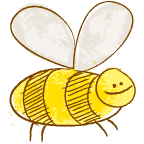Connecting garden activities with students’ “digital lives” has helped to build a stronger sense of community at Springdale Elementary School in Atlanta, which has an 800-square-foot rooftop garden with a beehive and a smaller land-based garden.
A few years ago, garden coordinator Jenna Mobley created a basic website and began posting garden photos online so students could see how the plants were growing each week.
“At first, it was just a way to help the kids understand how the plants change every time we work in the garden,” Jenna says. “But it evolved into so much more.”
Now, in addition to Jenna’s regular site updates, students in grades 3-6 are taking their own photos, uploading and publishing them straight to the Tending Our Common Ground website, then adding captions—all using a mobile app while they’re working in the garden.
Even the younger grades get into the action with scavenger hunts that involve matching up the online images with actual plants in the garden, and observing how the plant has changed since it was last photographed.
“The site has turned into a living portfolio and online scrapbook—and that’s been a game changer for us in terms of advocating for our garden program,” Jenna explains. “We’ve got visuals and data and survey results that are constantly getting updated. So it’s tangible evidence of what we are doing. That has helped me out a lot when applying for grants. I can just link to just all the specific pages that relate to a certain grant application.”
“The site has turned into a living portfolio and online scrapbook—and that’s been a game changer for us in terms of advocating for our garden program.”
Other teachers also use the website to track what students in each grade are doing in the garden so they can relate it back to lessons inside the classroom. Jenna tags each new post with a homeroom teacher’s name, so they can receive notification about or easily find posts relating to their students.
To encourage students to take garden lessons home, Jenna has also developed an extra credit program called Home Connection. If a student takes photos of an activity at home that relates to what they’re learning in the school garden—whether it’s a backyard herb garden they’ve planted, a family trip to the farmer’s market, or helping their parents cook with fresh produce—the student can submit the photo online and receive extra credit points.
“This has proven to be a great way to get parents in the know about what their kids are learning,” Jenna says. “It brings the lessons home and empowers the students to make changes in their lives outside of school. It’s also a great incentive because the kids love getting their photos on the website. Seeing their own faces there is the greatest reward.”
To build and maintain the site, Jenna currently uses Wordpress, which offers free, pre-made templates. Other do-it-yourself website options include Wix and Google Pages.
Jenna also uses Facebook, Instagram and other social media to spread word about site updates, which has been great for broader outreach in the community and for keeping students engaged.
“Some of the older students comment on my blog, and a lot of those comments have been really meaningful,” Jenna says. “One asked me to write up a salsa recipe, another took a video at home. It’s been a neat way to have an open dialogue. They tell me what they want to learn more about. And they can look back over time to see how our little piece of the world has evolved, see things grow and change and follow a progression through the seasons.”



